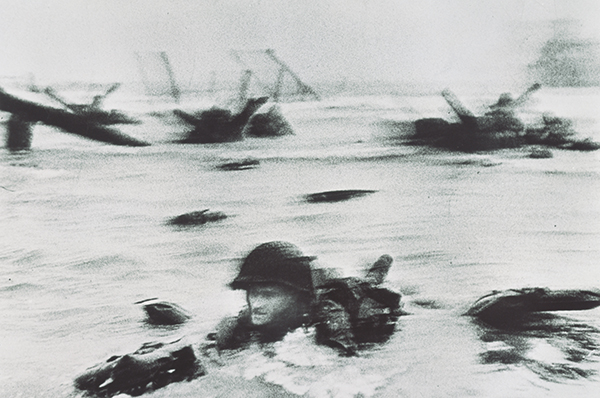
U.S. troops landing on Omaha Beach during “Operation D-Day.” The soldier in the foreground is believed to be Huston S. Riley of the 16th Regiment’s 2nd Battalion, Normandy, France, June 6, 1944
Robert Capa WAR
Mar. 15—May. 11, 2025
- Mar. 15—May. 11, 2025
- Closed Mondays (except when Monday falls on a holiday, in which case the museum is open and closed the following day)
- Admission:Adults ¥1200(960)/College Students, Over 65 ¥1000(800)/High School Students ¥800(640) *Prices in parenthesis apply to groups of 20 or more. (Reservation is required.) *Free for Junior high school students or younger, and holders of Japan’s disability identification cards (shogaisha techo) together with two caregiver. *Those over 65 years old receive free admission on the third Wednesday of every month by presenting proof of age at the ticket counter.
Robert Capa is regarded as one of the greatest photographers of the 20th century. He has been called a “poet of the camera” and an outstanding “witness to the times.” Behind his work were the eyes of a struggling humanist. Capa captured the suffering of war with unique human tenderness and humor. He immersed himself in the situations in which people found themselves with a strong conviction and passion to improve those situations, but more importantly, he had a keen eye for taking impactful photographs.
Capa was present in the midst of combat, risking his life to capture photographs that served as tangible and reliable records of the conflicts, from the political turmoil of Europe in the 1930s; to the Spanish Civil War, in which the Republican government forces were gradually overwhelmed and defeated by rebel forces led by General Franco and supported by the fascist regimes of Germany and Italy; the bombing of Hankou, China, by Japanese forces; the beginning of the Allied counter-offensive against Germany in North Africa during World War II; the war on the Italian front; the Normandy landings; and many other battles. Many of these photographs convey powerful messages that transcend time and space, resonating with generations to come.
This exhibition will feature roughly 140 works selected from the Tokyo Fuji Art Museum’s collection of approximately 1,000 works, with a focus on the theme of “war.” Current world events, including regional conflicts between Russia and Ukraine, Israel and countries such as Palestine and Lebanon, and the fallout from the collapse of the Assad regime in Syria, are unfortunately far removed from Capa’s desire to make the situation around people a little better. This is precisely why revisiting Capa’s photographic testimony is so significant today.
Structure of the exhibition
1) Becoming a journalist
2) Spanish Civil War
3) Second Sino-Japanese War
4) World War II (Wartime Britain, North Africa, Italian landings, Normandy landings, liberation of Paris, German surrender)
5) Founding of the State of Israel
6) The place where he took his final breath -Indochina
Works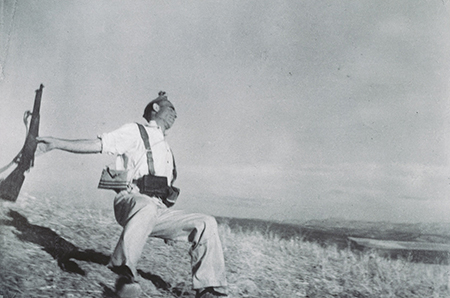
Falling Republican soldier, near Espejo, Córdoba front, Spain, early September 1936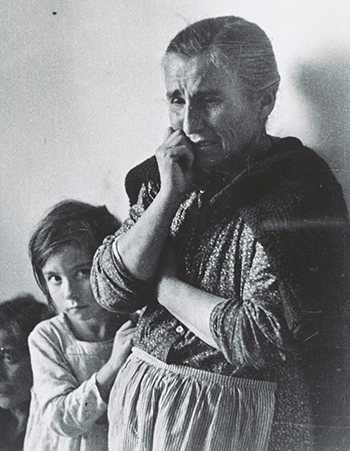
Elderly woman crying next to girl, Malaga front, Spain, February 1937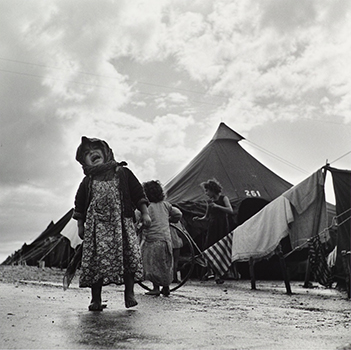
Child at the Sha’ar Ha’aliya transit camp for new immigrants, near Haifa, Israel, 1950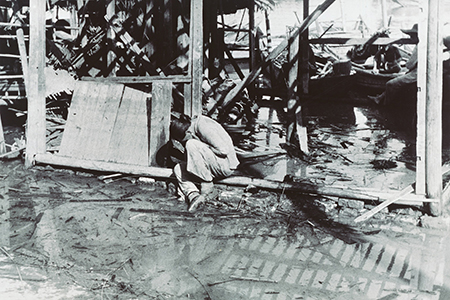
Woman sitting amid the ruins of a house after a Japanese air raid, Hankou, China, 1938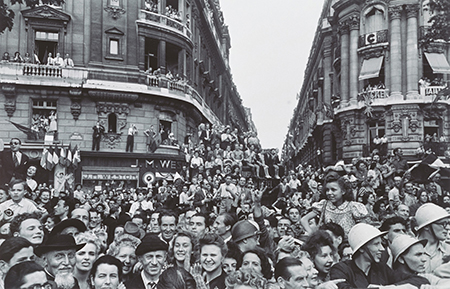
People celebrating the liberation of Paris, Paris, France, August 26, 1944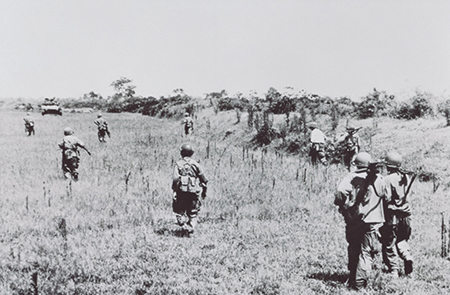
On the road from Nam Dinh to Thai Binh (one of the last photographs taken before
Capa was killed by stepping on a landmine), French Indochina (now Vietnam), May 25, 1954
Robert Capa (1913–1954)
Born in Budapest, Hungary, in 1913. During his career as a photojournalist, Capa traveled to battlefields around the world from the 1930s until his death more than 20 years later, leaving behind countless photographs that make viewers feel like a part of the scene. In particular, his photo The Falling Soldier, taken during the Spanish Civil War, and D-Day, taken alongside troops during the Normandy landings, remain masterpieces in the history of photojournalism. In 1947, he joined Henri Cartier-Bresson, David Seymour, and others to form an international team of photographers known as Magnum Photos. Capa came to Japan in 1954 and visited Tokyo, Nara and Osaka. He then went to cover the First Indochina War and was killed by a landmine while on assignment, ending his 40-year career.
*Projects are subject to change due to various circumstances. We appreciate your understanding in advance.

